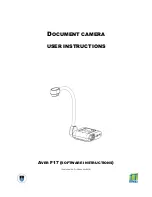
Ordinary
The camera is mounted right above the object – perpendicular to
the direction of movement – and the laser is illuminating the
object from the side.
This geometry gives the highest resolution when measuring
range.
Reversed ordinary
As the Ordinary setup, but the placement of the laser and the
camera has been switched so that the lighting is placed above
the object.
When measuring range, the reversed ordinary geometry gives
slightly lower resolution than the ordinary geometry. It gives the
least distorted depth map representation because the measure‐
ments are made in the Z plane. This is the most common geome‐
try.
Specular
The camera and the lighting are mounted on opposite sides of
the surface normal of the object.
Specular geometries are useful for measuring dark or matte
objects, since it requires less light than the other geometries.
Look-away
The camera and the lighting are mounted on the same side of the
surface normal of the object.
This geometry can be useful for avoiding unwanted reflexes but
requires more light than the other methods and gives lower reso‐
lution.
x
y
z
β
α
Ordinary
Reversed ordinary
α
β
α
β
Specular
Look-away
As a rule of thumb, the height resolution increases with the angle between the camera
and the laser, but the resolution also depends on the angle between the camera and
the height direction (z-axis).
The relationship between the measured locations on the sensor and their real-world
positions is typically non-linear, and only known after a calibration procedure. As a
starting point, the following formulas can be used for approximating the resolution for
the different geometries, in for example mm/pixel:
Geometry
Approximate range resolution
Ordinary
ΔZ ≈ ΔX / tan(β)
Reversed ordinary
ΔZ ≈ ΔX / sin(α)
ANNEX
15
8020774/14IM/2019-07 | SICK
O P E R A T I N G I N S T R U C T I O N S | Ranger3
81
Subject to change without notice








































